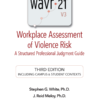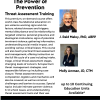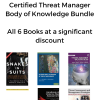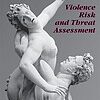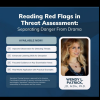Assessing Threats and Violence Risk on Campus, in the Workplace & Community with the WAVR-21
Determining risk of violence is paramount to anyone doing threat assessments. Dr. Stephen White, co-author of the WAVR-21, will present a one-day training on violence risk and threat assessment in workplace, campus and community settings using the WAVR-21 (Workplace Assessment of Violence Risk). The centerpiece of this dynamic event will focus on the use of the WAVR-21, a structured professional guide designed for mental health professionals and workplace-based threat management team members in security, education, human resources, law enforcement and mental health. First published in 2007, recognition of the WAVR-21 continues to grow as the go-to assessment tool for threat scenarios. Now in its 3rd edition, the WAVR includes 21 empirically-based criteria for assessing different forms of workplace violence risk, including student violence in college and university settings. Incorporating years of research, the core of the WAVR-21 is the “pathway to violence” approach to cases, as developed by professionals at the US Secret Service and the US Marshals Office. Research has demonstrated good to excellent interrater reliability for summary judgments of violence risk based on the WAVR-21, and validation research continues. In this one-day format the presenter will succinctly describe the scientific and clinical basis for the WAVR risk and protective factors. From there the focus will be on practical use of the WAVR screening and assessment tools – how they are integrated into dynamic threat case management with its demands for flexibility. The workshop will include didactic segments, case vignettes, and video presentations. Common workplace threat scenarios will be addressed, including stalking, subjects driven by paranoia and mental illness, domestic violence, bullying, and chronically antisocial individuals. The goal is to get participants up and running on the use of the WAVR-21 in this short, one day introduction to the instrument.
Attendees are encouraged to purchase a copy of the WAVR-21 manual before the workshop if you don’t already have one. Those who wish to purchase the WAVR-21 in advance can do so at www.specializedtraining.com. The WAVR-21 is currently used by national and international organizations, government agencies and educational institutions.
“WAVR training was selected and provided on a systemwide basis to all ten University of California campuses.” UC Office of the President
Workshop Content:
The scientific and clinical basis for the WAVR-21 risk and protective factors
Assessing violence risk in the workplace
Assessing communicated threats in the workplace
Integrating the WAVR-21 into ongoing workplace threat management practice
Common workplace threat scenarios
Applying the WAVR-21 in the workplace threat assessment process
Workshop Objectives:
List the steps of the “pathway to violence” as put forth by Calhoun and Weston
Identify how the WAVR captures and documents a subject’s risk of violence at any given moment
Describe the differences between making a threat and posing a threat
Identify the role of mental disorder in targeted violence
Describe how domestic violence issues create risk in the workplace
List the legal issues involved in confronting a potentially violent employee
Demonstrate through practice cases the ability to accurately assess risk using the WAVR-21

